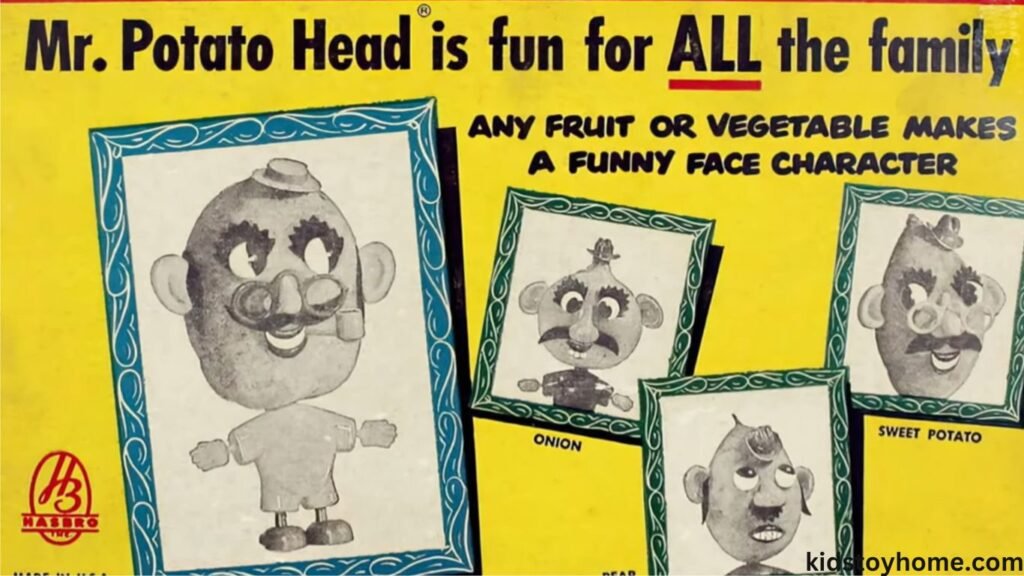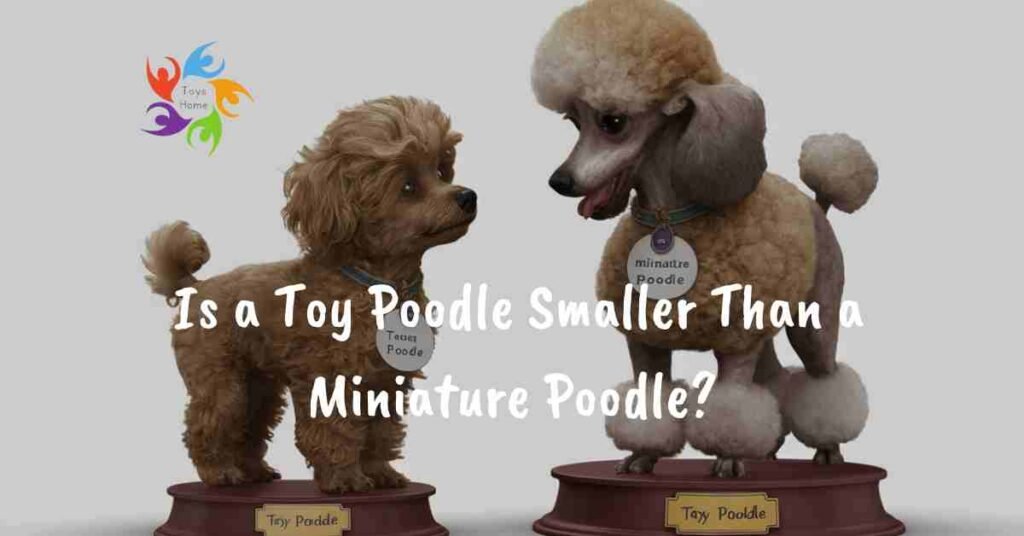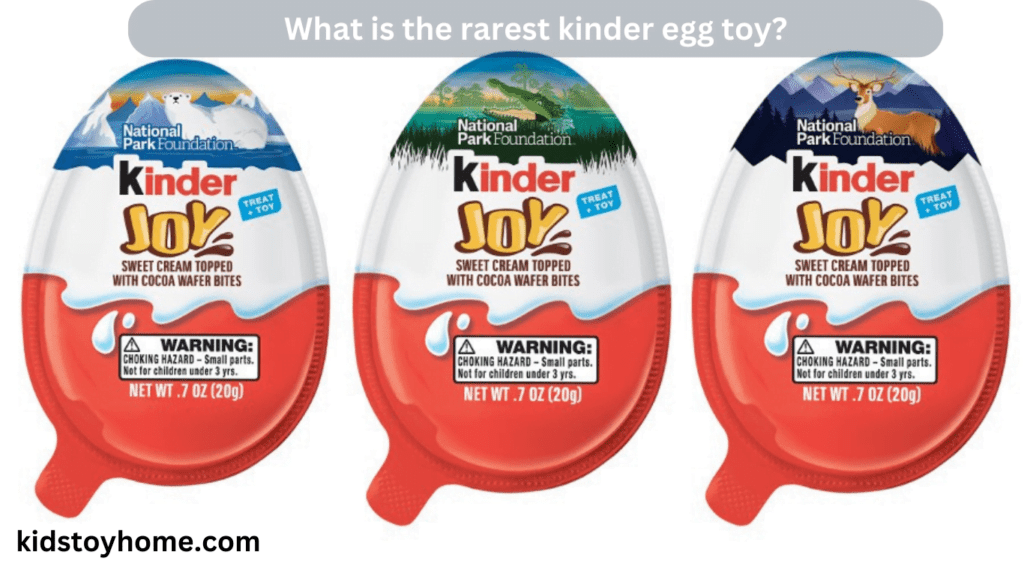
The advent of television advertising marked a revolutionary shift in the way products and services were marketed to the public. From simple black-and-white spots in the early days of broadcast to the vivid, high-definition ads of today, television commercials have long been an integral part of contemporary culture.
A particularly intriguing chapter in this history is the emergence of toy commercials. During the mid-20th century, as TV sets became a household staple, children became a focal audience for advertisers.
Toy commercials soon burgeoned into a cultural phenomenon, captivating the imaginations of young viewers and significantly shaping their playtime preferences.
These advertisements not only sparked joy and excitement in children but also played a pivotal role in defining consumer trends for generations to come.
The First Toy Advertised on Television
In the annals of television history, Mr. Potato Head claims the title of the first toy to be advertised directly to children through the TV screen in 1952. This marked a pivotal moment in the toy industry, which had previously relied on parents making purchasing decisions without the pester power of their children.

The context of this era was ripe for such a revolution; post-war prosperity had begun to bloom and televisions became a household staple. The economy was on an upswing and consumer culture was gaining momentum.
Toy companies, recognizing the opportunity to captivate a young audience, began to strategize ways to leverage this new medium—thus changing the marketing landscape forever.
Impact on the Toy Industry
The first televised toy advertisement represented a watershed moment in the history of marketing within the toy industry. By leveraging the pervasive reach of television, the advertised product captured the imagination of a wide audience, setting a precedent for the power of visual media in marketing.
This pioneering commercial not only showcased the toy’s features but also painted a story around it, inviting children to envision themselves within that narrative.
The success of this novel approach spurred a meteoric rise in TV advertising for toys, poising the screen as the primary battleground for the hearts and consumer choices of the young audience.
The influence of these early forays into televised toy advertising persists to this day, perpetuating constant innovation to enchant the next generation of youthful customers.
Influence on Children and Consumerism
The advent of televised toy commercials had an immediate and profound impact on children’s consumer habits. Captivating jingles, colorful visuals, and appealing narratives not only created an emotional bond between children and toys but also catalyzed an insatiable demand for the latest playthings showcased on the small screen.

Simultaneously, this phenomenon sparked a significant ethical debate regarding the implications of marketing directly to children—a demographic vulnerable to persuasive advertising and not fully capable of making informed purchasing decisions.
Critics raised concerns that such marketing strategies could foster materialism and impulsive buying behaviors among the youth, perpetuating a cycle of consumerism that many considered inappropriate for impressionable minds.
The Legacy of Early Toy Commercials
The rudimentary features that characterized early toy commercials—the catchy jingles, the persuasive taglines, and the dynamic storytelling—laid the groundwork for the sophisticated marketing techniques we see today.

These pioneering efforts created a blueprint that has been refined over the decades into an art form adept at capturing attention and sparking desire. Now, with the emergence of digital platforms, the evolution has progressed to interactive and personalized advertising, targeting children and parents alike through a myriad of channels.
Today’s toy commercials are not just confined to the television screen but have expanded to online videos, social media, and even apps, ensuring that they reach their young audience wherever they are likely to be engaged.
Conclusion
The trajectory of toy commercials encapsulates a striking arc of innovation and transformation.
As we reflect on the history of televised advertising for children’s toys, it’s clear that these early commercials were far more than just ephemeral pitches; they were the vanguard of a perpetual and sophisticated marketing ecosystem, integrating entertainment with promotion.
The journey from those early adverts to the multifaceted campaigns of today unveils how the tendrils of advertising have woven themselves into the fabric of our media consumption—leaving indelible marks on the culture of childhood and shaping the way toy industries connect with the next generation.
FAQs About First Toy Advertised on TV
What was the first toy to be advertised on TV?
The 1st toy advertised on television is believed to be Mr. Potato Head. It made its debut on the airwaves in 1952 and quickly became a popular item among children of that era.
How did the advertisement for Mr. Potato Head differ from modern toy commercials?
The advertisement for Mr. Potato Head was much simpler than modern-day commercials, focusing on the versatility of the toy and its appeal to children without the use of animated characters or elaborate special effects that are common in today’s ads.
What impact did the first toy commercial have on television advertising?
The television commercial for Mr. Potato Head marked the beginning of a new era in marketing, proving that TV could be a powerful medium for directly reaching children and influencing their preferences. This paved the way for a whole industry centered around children’s television advertising.
Were there any controversies surrounding the first televised toy advertisement?
Like all trailblazing movements, the advent of toy advertising on television brought about discussions regarding the ethics of marketing to children, including concerns about over-commercialization and the impact of advertising on child development and behavior.
How have toy commercials evolved since the first TV advertisement?
Toy commercials have evolved significantly, with advancements in video production allowing for more dynamic and engaging advertisements. They often feature animation or child actors and are strategically timed to air during children’s programming to maximize their influence.
Can the original Mr. Potato Head commercial be viewed today?
Yes, the original Mr. Potato Head commercial can be found in archives and through various online platforms. Toy enthusiasts and historians value these early commercials for their nostalgic appeal and historical significance.





